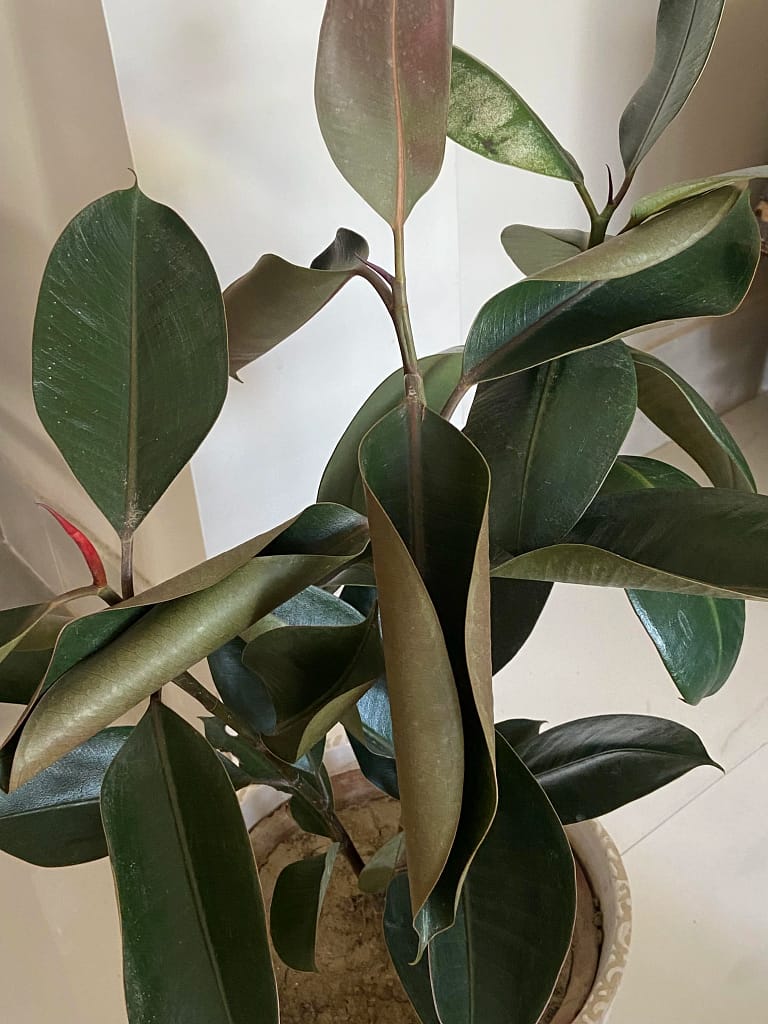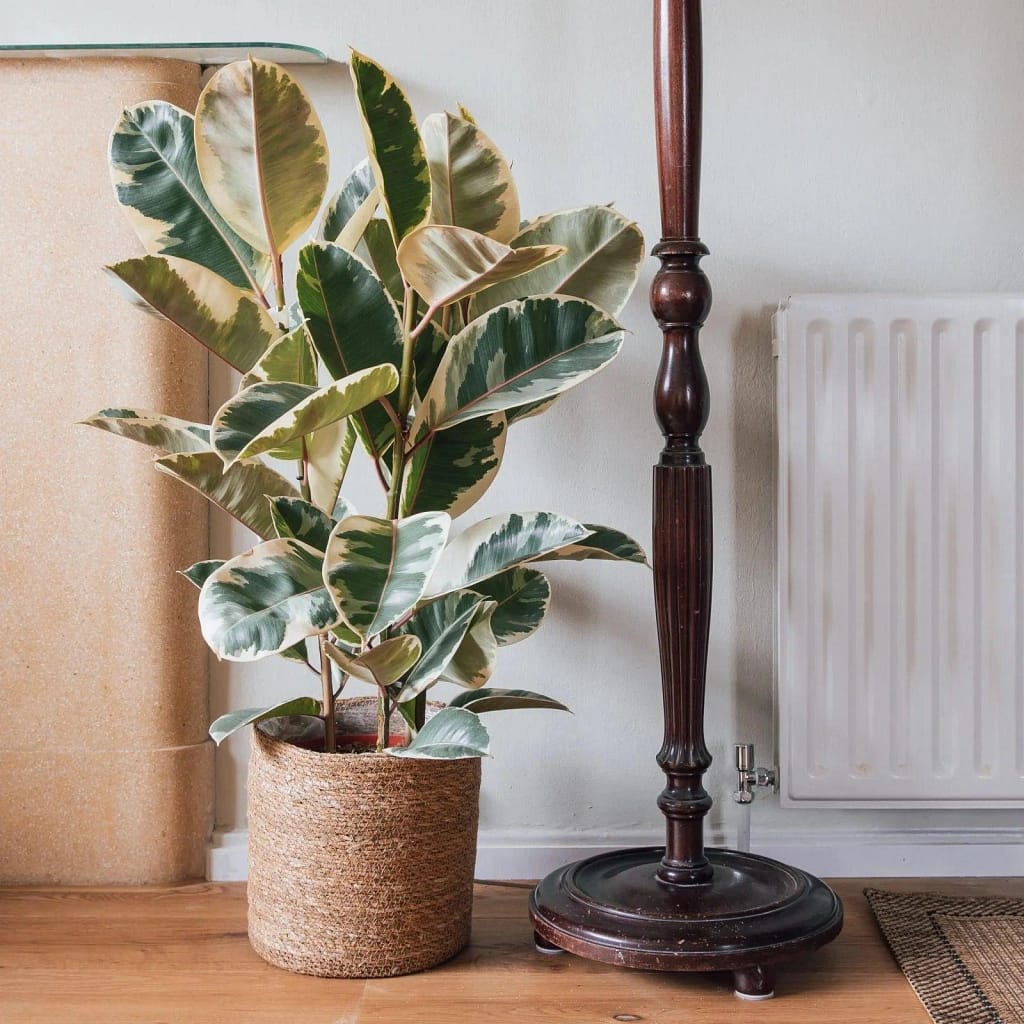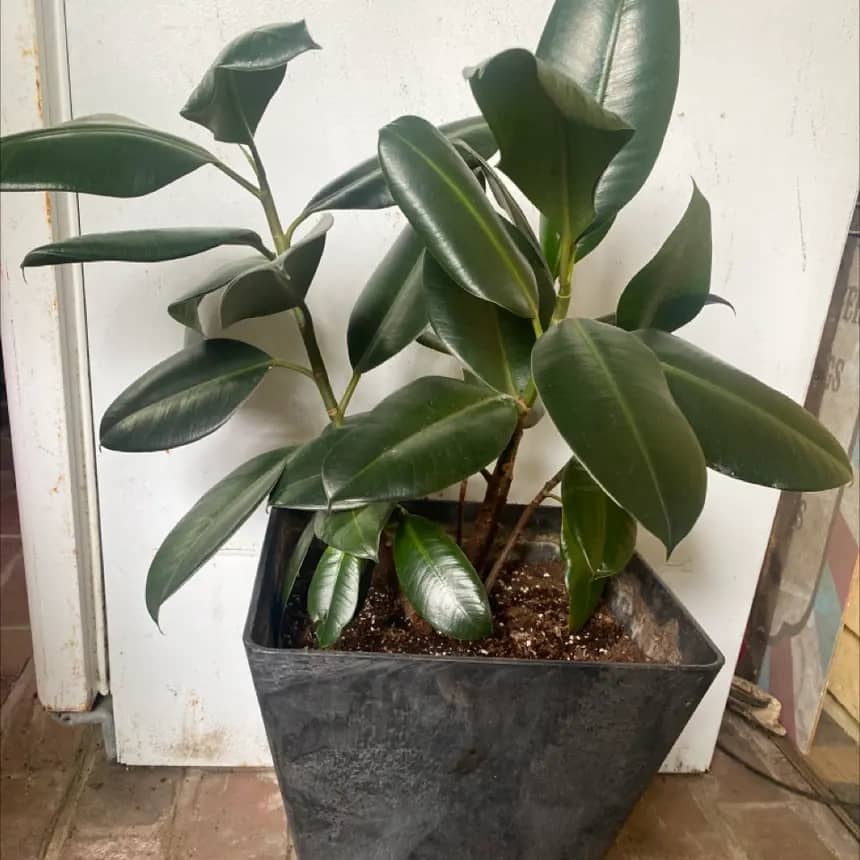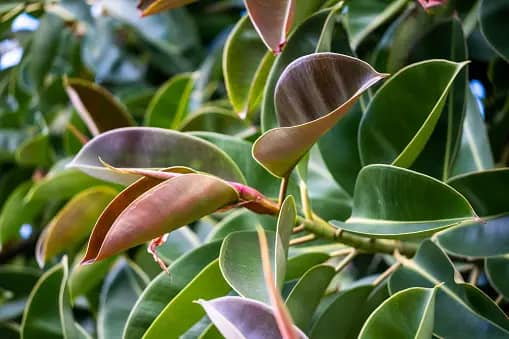| Introduction | 1. Overview of the Rubber Plant 2. Importance and Popularity of Rubber Plants 3. Benefits of Having Rubber Plants |
| Types and Varieties | 1. Common Varieties of Rubber PlantsFicus elastica ‘Robusta’ Ficus elastica ‘Burgundy’ Ficus elastica ‘Tineke’ 2. Rare and Exotic Varieties Ficus elastica ‘Ruby’ Ficus elastica ‘Melany’ |
| Characteristics and Features | 1. Physical Appearance Leaf Shape and Color Growth Patterns 2. Unique Traits Latex Production Air Purifying Qualities |
| Care and Maintenance | 1. Regular Watering Practices 2. Fertilization 3. Pruning Techniques 4. Repotting Tips 5. Common Pests and Diseases |
| Growing Conditions | 1. How to Plant Rubber Plants Choosing the Right Pot Soil Preparation 2. Propagation Methods Stem Cuttings Air Layering |
| Benefits of Rubber Plants | 1. Health Benefits Air Purification Stress Reduction 2. Aesthetic and Decorative Uses 3. Environmental Impact |
| Common Problems and Solutions | 1. Yellowing Leaves 2. Leaf Drop 3. Stunted Growth 4. Pest Infestations |
| Seasonal Care Tips | 1. Winter Care 2. Summer Care 3. Adjusting Watering and Feeding |
| Indoor vs. Outdoor Growing | 1. Advantages of Indoor Growing 2. Benefits of Outdoor Cultivation 3. Adapting Care Routines |
| Expert Insights | 1. Quotes from Horticulturists 2. Advice from Experienced Gardeners |
Outline of This Artical is here..Introduction Rubber plant
Overview
The rubber plant, scientifically known as Ficus elastica, is a popular houseplant celebrated for its large, glossy leaves and easy maintenance. Originating from Southeast Asia, it has become a favorite among indoor gardeners due to its robust nature and striking appearance.
Importance and Popularity
Rubber plants are prized not only for their beauty but also for their resilience and ability to flourish in a variety of environments. They are particularly popular in homes and offices for their ability to improve indoor air quality and add a touch of greenery to indoor spaces.
Benefits of Having Rubber Plants
Having rubber plants in your home or office can bring numerous benefits. They are known to purify the air by removing toxins, thereby improving the overall quality of your indoor environment. Additionally, they can reduce stress and enhance the aesthetic appeal of any space.
Types and Varieties
Common Varieties
- Ficus elastica ‘Robusta’: Known for its thick, large leaves that are a vibrant green color. It is one of the most common and easy-to-care-for types, making it a great choice for beginners.
- Ficus elastica ‘Burgundy’: Distinguished by their deep burgundy leaves, which can appear almost black in certain lighting. This variety adds a bold statement to any room.
- Ficus elastica ‘Tineke’: Features variegated leaves with shades of green, cream, and sometimes a hint of pink. Its unique coloration makes it a popular choice for those looking to add visual interest to their plant collection.
Rare and Exotic Varieties
- Ficus elastica ‘Ruby’: Known for its reddish-pink variegation, making it a stunning focal point in any plant display. This rare variety requires a bit more care to maintain its vibrant colors.
- Ficus elastica ‘Melany’: Has smaller, more compact leaves that are dark green and glossy. This variety is less common but is appreciated for its elegant, understated appearance.
Characteristics and Features
Physical Appearance
- Leaf Shape and Color: Characterized by large, broad leaves that can vary in color from deep green to burgundy and variegated patterns. The leaves are typically oval-shaped with a pointed tip and have a glossy, leathery texture.
- Growth Patterns: Can grow quite tall, often reaching heights of up to 10 feet indoors with proper care. They have a bushy growth habit and can be pruned to maintain a desired shape and size.
Unique Traits
- Latex Production: One of the most unique features is its ability to produce latex. The milky sap that oozes from cut stems or leaves was once used as a primary source of natural rubber.
- Air Purifying Qualities: Highly effective at purifying indoor air. They can remove toxins such as formaldehyde, making them a beneficial addition to any home or office environment.
Growing Conditions
Ideal Climate
Rubber plants thrive in warm, humid conditions. They are native to tropical regions and prefer temperatures between 60-85°F (15-29°C). It is important to keep them away from drafts and sudden temperature changes.
Light Requirements
They thrive best in bright, indirect light, but can also tolerate lower light conditions. However, too little light can cause the leaves to lose their vibrant color and become dull.
Soil Preferences
Well-draining soil is essential. A mix of potting soil with perlite or sand can help ensure proper drainage and prevent root rot.
Watering Needs
Prefer consistently moist soil, but not waterlogged. Let the top inch of soil dry out between waterings. Overwatering can cause root rot, while underwatering can lead to leaf drop.
Humidity and Temperature
High humidity levels are ideal. If your home has dry air, use a humidifier or place a tray of water near the plant to increase humidity. Keep the plant in a warm spot, away from cold drafts.
Planting and Propagation
How to Plant
- Choosing the Right Pot: Opt for a pot with drainage holes to avoid water buildup at the bottom. Rubber plants prefer slightly snug pots, as this encourages healthy root growth.
- Soil Preparation: Use a well-draining potting mix. Adding perlite or sand to the soil can improve drainage and prevent waterlogged conditions.
Propagation Methods
- Stem Cuttings: Cut a healthy stem just below a node, remove the lower leaves, and place the cutting in water or soil until roots develop.
- Air Layering: Make a small cut in a stem, wrap it with moist sphagnum moss, and cover it with plastic wrap until roots form. This method can produce a new plant while keeping the parent plant intact.

Care and Maintenance
Regular Watering Practices
Water rubber plants when the top inch of soil dries out. Ensure the pot has adequate drainage to prevent the plant from sitting in water.
Fertilization
Feed rubber plants with a balanced liquid fertilizer every 4-6 weeks during the growing season (spring and summer). Cut back on feeding in the fall and winter.
Pruning Techniques
Prune to maintain their shape and encourage bushier growth. Remove dead or yellowing leaves and trim back leggy stems.
Repotting Tips
Repot every 1-2 years to refresh the soil and provide more space for root growth. Select a pot that is 1 size larger than the current one.
Common Pests and Diseases
Identification and Treatment
Rubber plants can be affected by pests such as spider mites, scale, and mealybugs. Regularly inspect the plant and treat any infestations with insecticidal soap or neem oil. Fungal diseases can be prevented by ensuring proper air circulation and avoiding overwatering.
Benefits of Rubber Plants
Health Benefits
- Air Purification: Known for their ability to remove toxins from the air, such as formaldehyde, benzene, and trichloroethylene. This can lead to improved indoor air quality and overall health.
- Stress Reduction: Having plants in your environment can reduce stress and promote a sense of well-being. Their lush, green foliage can have a calming effect on the mind.
Aesthetic and Decorative Uses
Rubber plants are a versatile addition to home decor. Their bold leaves and upright growth habit make them an excellent focal point in any room. They can be styled in various ways to complement different interior designs.
Environmental Impact
Rubber plants contribute to a healthier environment by improving air quality and adding to the green space in urban settings. They also play a role in carbon sequestration, helping to reduce the overall carbon footprint.
Common Problems and Solutions
- Yellowing Leaves: May indicate overwatering or poor drainage. Ensure the soil is well-draining and adjust your watering schedule to prevent waterlogged conditions.
- Leaf Drop: Can occur due to sudden changes in temperature, drafts, or inconsistent watering. Keep the plant in a stable environment and maintain a regular watering routine.
- Stunted Growth: Can be caused by insufficient light, poor soil, or lack of nutrients. Ensure the plant receives adequate light, use a well-draining potting mix, and fertilize regularly during the growing season.
- Pest Infestations: Treat pest infestations with insecticidal soap or neem oil. Regularly inspect the plant for signs of pests and treat promptly to prevent severe damage.
Seasonal Care Tips
- Winter Care: During the winter months, reduce watering and avoid fertilizing as the plant’s growth slows down. Keep the plant away from cold drafts and ensure it receives adequate light.
- Summer Care: In the summer, rubber plants may require more frequent watering due to increased evaporation. Maintain high humidity levels and protect the plant from direct sunlight, which can scorch the leaves.
- Adjusting Watering and Feeding: Adjust watering and feeding schedules according to the plant’s growth cycle. Increase water and fertilizer during the active growing season and reduce both during the dormant period.

Indoor vs. Outdoor Growing
- Advantages of Indoor Growing: Indoor growing allows for better control over the plant’s environment, including temperature, light, and humidity. It also protects from harsh weather conditions and pests.
- Benefits of Outdoor Cultivation: Outdoor cultivation can result in faster growth and larger plants due to increased light exposure and natural conditions. However, it requires more vigilance to protect the plant from pests and extreme weather.
- Adapting Care Routines: Care routines may need to be adjusted depending on whether the plant is grown indoors or outdoors. Monitor the plant’s condition regularly and make changes as needed to ensure optimal health.
Expert Insights
- Quotes from Horticulturists: “This plant is an excellent choice for both novice and experienced gardeners. They are resilient and can thrive in a variety of conditions, making them a versatile addition to any plant collection.” – Jane Smith, Horticulturist
- Advice from Experienced Gardeners: “One of the best tips for caring for rubber plants is to avoid overwatering. Let the soil dry out slightly between waterings to prevent root rot and ensure healthy growth.” – John Doe, Experienced Gardener

Rubber fig,Ficus elastica,Rubber Tree,Rubber plant indoor benefits,Rubber plant indoor or outdoor,Rubber plant scientific name,Rubber plant care,Indoor rubber plant,Rubber plant uses,ficus rubber plant,rubber plant indoor,ficus elastica,care of rubber plant,care for rubber plant,benefits of rubber plant,rubber plant benefits,rubber tree rubber,rubber trees,rubber plant,ficus rubber plant,ficus rubber tree,ficus rubber plant care,introduction, overview of the rubber plant, importance and popularity of rubber plants, benefits of having rubber plants, types and varieties, common varieties of rubber plants, Ficus elastica ‘Robusta’, Ficus elastica ‘Burgundy’, Ficus elastica ‘Tineke’, rare and exotic varieties, Ficus elastica ‘Ruby’, Ficus elastica ‘Melany’, characteristics and features, physical appearance, leaf shape and color, growth patterns, unique traits, latex production, air purifying qualities, care and maintenance, regular watering practices, fertilization, pruning techniques, repotting tips, common pests and diseases, growing conditions, how to plant rubber plants, choosing the right pot, soil preparation, propagation methods, stem cuttings, air layering, benefits of rubber plants, health benefits, air purification, stress reduction, aesthetic and decorative uses, environmental impact, common problems and solutions, yellowing leaves, leaf drop, stunted growth, pest infestations, seasonal care tips, winter care, summer care, adjusting watering and feeding, indoor vs. outdoor growing, advantages of indoor growing, benefits of outdoor cultivation, adapting care routines, expert insights, quotes from horticulturists, advice from experienced gardeners

